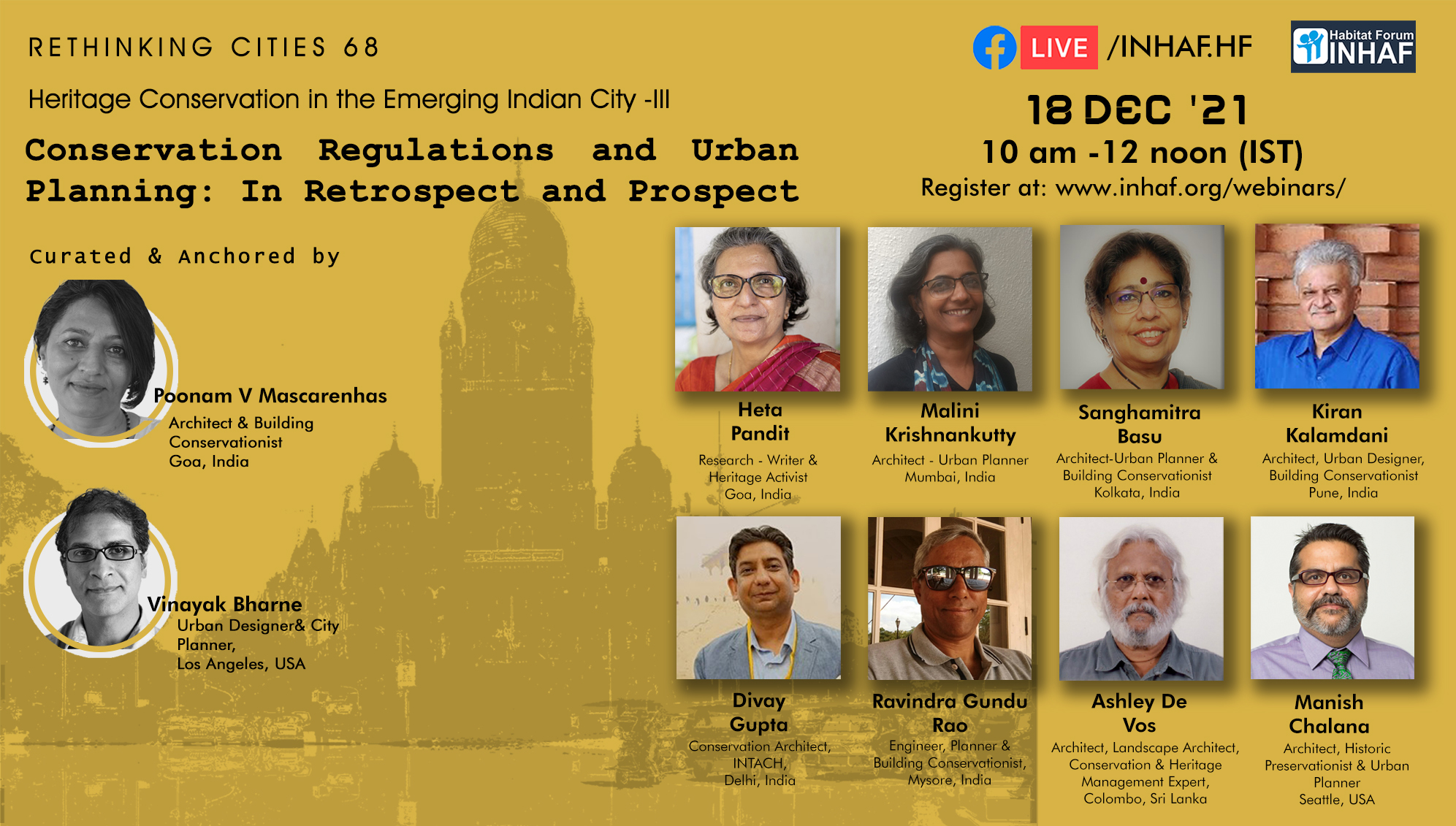
Local Time
- Timezone: America/New_York
- Date: Dec 17 - 18 2021
Heritage Conservation in the Emerging Indian City – III – Conservation Regulations and Urban Planning: In Retrospect and Prospect
The interface of heritage conservation and an effective legislation/regulation framework to enable and support it remains a perplexing question in the context of Indian cities. This discussion seeks to examine three key related questions: How effective have conservation regulations been over the past 25 years in India? Where have the specific successes and shortcoming been in this regard? What alternative initiatives to formal regulation does the Indian context present that may be worthy of broader application.
In the 1980s, a sustained campaign led by citizens groups of Bombay with the Maharashtra Government marked the first instance in India to recognise the benefit of Heritage Regulations. Consequently, information on listed buildings and precincts is today available in a list annexed to Maharashtra Government Notification No. DCR 1090/3197/RDP/ UD- II dated 21st April 1995, published by municipality in a book called “Heritage Regulations for Greater Bombay “. The regulation came into force on 1st June 1995. There are 574 buildings including several forts, 14 milestones and 18 precincts including open spaces listed in Greater Bombay. Subsequently, Delhi, Hyderabad and Kolkata have established regulations to protect heritage buildings, graded according to historical and architectural significance.
The rationale for the framing of the regulations is well explained in the ‘INTACH Charter for Unprotected Architectural Heritage and Sites in India’, which was adopted on 4th Nov 2004 at INTACH National Convention, Delhi. Most significantly and relevant to the cities in section of Principles is (http://www.intach.org/about-charter-principles.php):
– The overarching objective for undertaking conservation of unprotected architectural heritage and sites is to establish the efficacy of conservation as a development goal. What to conserve will, therefore, be determined by those strategies of conservation, which accommodate the imperatives of development and the welfare of the community while seeking economically to achieve maximum protection of the significant values of the architectural heritage and site.
These sentiments aside, let us now view the case of Planning on ground in the smallest State of India – Goa – with only two districts and population of about 12.5 lakhs with its Northern boundary- the Western Ghats, recognised as one of the biodiversity hotspots of the world and also included in World Heritage List.
Goa’s regional plan (RP) 2011 was delayed and got notified only in August 2006. Among other things, marshes, forests (notified and private), mangroves and even the coastal lands which would be governed by CRZ- had been given settlement status in large chunks. With no substantial demographic shift in the state, one had to wonder at the logic of such a major alteration. It instigated the rally of December 18th 2006, where thousands joined the demand for revoking the RP2011. The Government of Goa revoked the notified Regional Plan for Goa 2011 in February, 2007. A task force was set up in October, 2007. A draft RP2021 was notified in October 2008 and a State Level Committee was set up to finalize the RP 2021 with inputs from village level committees. However, the RP2021 is yet to be completed and no changes have been made in the laws in force to provide for participatory planning. In the meantime, the destruction continues.
The draft RP- 2021 has many a new headings: Eco sensitive Zones 1 and 2, being of great interest; for it not only mentions the nature as heritage but also views the built heritage as an important resource. Other policy thrusts are the agriculture policy, mining and tourism. Not surprisingly, demands are being made for inclusion of experts like sociologists, economists, ecologists, agriculture scientists, and in light of increasing threats of climate crisis, scientists from the National institute of Oceanography etc. – to participate in framing the policy for the development plans- and not just the architects, engineers, planners; which has been the norm.
Numerous questions emerge: By what methods and means is the development of India being shaped? Does India support an inclusive planning process? Do city planners and policy makers understand their deeper role in this dialogue – not as passive thinkers of politically-correct rubrics, but charged activists and advocates for practical methods and initiatives born directly from India’s socio-political realities? Is it any different in other parts of the world? What can India emulate that serves the Nation and its historicity?
